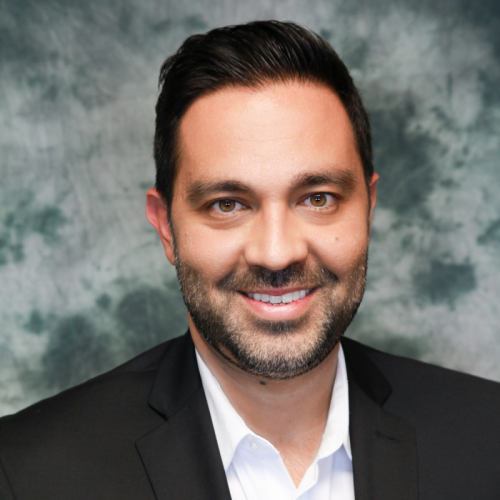BMC Therapy
Bone Marrow
Concentrate Therapy
A promising cutting-edge regenerative therapy to help
accelerate healing in moderate to severe osteoarthritis
and tendon injuries.

2 hour Procedure
The entire process takes approximately one hour and patients are sent home the same day.

Non Surgical
PRP is a non-surgical procedure. The procedure is simple and is performed in the office.

Outpatient
The entire process takes approximately one hour and patients are sent home the same day.
About BMC Therapy
While similar to Platelet Rich Plasma (PRP) in its ability to harness the body’s ability to heal itself through the aid of growth factors, BMC also utilizes regenerative cells that are contained within a patient’s own bone marrow. The marrow contains a rich reservoir of “pluripotent” stem cells that can be withdrawn from the patient’s hip bone and used for the procedure. Unlike other cells of the body, stem cells are “undifferentiated”, meaning they are able to replicate themselves into various types of tissue.

BMC Therapy is good for treating:
Knee Pain
Osteoarthritis
Meniscus Tears (Medial, Lateral)
Chondromalacia Patella
Tendon Injuries (Patellar Tendonitis, Quad Tendon)
Ligament sprains or tears (MCL, LCL, ACL)
Hip Pain
Osteoarthritis
Hip Labrum Tears
SI Joint Dysfunction
Greater Trochanteric Bursitis
Iliotibial Band (ITB) Syndrome
Shoulder Pain
Osteoarthritis
Rotator Cuff Tendinitis
Tendonopathy
Partial Tears
Labrum Tear
Bicipital Tendinitis
Elbow Pain
Lateral Epicondylitis (Tennis Elbow)
Medial Epicondylitis (Golfers Elbow)
Wrist or Hand Pain
Osteoarthritis
DeQuervain’s Tenosynovitis
Ankle or Foot Pain
Achilles Tendinitis or Partial Tears
Plantar Fasciitis
Ankle sprains/ligament injury
Spine Pain
Facet Joint Arthropathy
Sacroiliac (SI) Joint Dysfunction

I love Dr. Charchian. He’s thorough, knows what he’s talking about, is kind, and doesn’t push for unnecessary treatments.
Latifa A.
Santa Monica
Frequently Asked Questions
General
In general, PRP may be more appropriate for mild to moderate osteoarthritis or tendon injuries. BMC may be reserved for more challenging cases such as moderate to severe osteoarthritis or when more potent effects are desired.
No. While there are currently several publications in peer-reviewed medical journals showing the positive effects of BMC therapy on tendon, soft tissue, and cartilage injuries, BMC is still not covered by insurance companies at this time.
Bone marrow derived cancer (such as lymphoma), non-bone marrow derived cancer or metastatic disease (should be checked with your oncologist), and active systemic infection are all contra-indications. Blood thinning medications such as Coumadin must be discontinued and managed appropriately by your cardiologist or primary doctor prior to the procedure.
Unlike other cells of the body, bone marrow cells are “undifferentiated”, which means they have the ability to replicate themselves into a variety of tissue types. When an injury occurs, the usual number of regenerative cells needed for tissue regeneration is often inadequate. With BMC, the concentrate of regenerative cells provides a more robust healing of the damaged tissue and aids in growth and repair by accelerating the body’s natural healing mechanism. While the full benefits of BMC are still unknown, it has been shown to reduce swelling, relieve pain, and enhance healing of articular cartilage and bone.
Numerous conditionscan be considered for treatment with BMC. Based on current research and clinical experience, moderate to severe cases of osteoarthritis and severe tendon injuries show promising results.
BMC therapy is a promising non-surgical regenerative treatment used to treat various orthopedic injuries, including moderate to severe osteoarthritis and tendon injures. BMC is a concentrate of regenerative stem cells obtained from a patient’s own bone marrow. The physician removes a small amount of the patient’s bone marrow and spins it in a centrifuge in order to generate a powerful concentrate that is injected into the injured area. In the past, these types of cells were often very difficult and expensive to obtain from the body. With recent medical advancements, the cells can be easily obtained and the procedure can be done with minimal discomfort by a simple office procedure.
PRP therapy is a progressive non-surgical treatment to treat a variety of orthopedic conditions including arthritis, tendon injuries, and ligament injuries.PRP is part of a group of state-of-the-art treatments collectively referred to as Regenerative Medicine. PRP treats an injured area naturally using your body’s own growth factors to accelerate healing.
BMC stands for Bone Marrow Concentrate. It is also sometimes referred to as BMAC or Bone Marrow Aspirate Concentrate.
Procedure
Most patients notice some level of improvement by 2-6 weeks following BMC. Increased stability and strength are typically reported along with the decrease in pain. A second level of benefits may be obtained between 6 weeks and 3months. Patients are encouraged to remain active with a functional rehabilitation program and strengthen surrounding muscles during this period.
For the first 2-3 days, swelling and discomfort are typical in the injected area. By the end of the first week, these symptoms usually begin to resolve and physical therapy is started to optimize BMC effects and facilitate recovery. Patients have responded to BMC treatment at varying timeframes.
Most patients require only a single BMC treatment depending on the degree of the injury. However, in challenging cases, if a patient experiences significant relief that plateaus, they may consider a second BMC injection months later.
Unlike cortisone shots which mask symptoms and can damage tissue, BMC targets the root of the problem and attempts to heal the tissue.
While there is some slight discomfort, most patients tolerate the procedure very well and with minimal pain. The procedure is done under local anesthetic to minimize any discomfort. Post-injection soreness at the injection site is sometimes present because of an inflammatory response caused by BMC therapy. This soreness usually resolves on its own within a few days after the injection. It is important that anti-inflammatory medications such as Ibuprofen, Naproxen and Aspirin be avoided following treatments because these medicines may block the effects of the intended healing response facilitated by the post-injection inflammation. It is acceptable to use pain medication such as Tylenol, and in some cases a prescribed pain reliever which does not have anti-inflammatory properties, to control discomfort as needed.
The process is relatively simple. The patient is first numbed using a mixture of local anesthetics. Under the guidance of an X-Ray machine, the physician then removes a small amount of the patient’s bone marrow from the hip bone which is then placed into a centrifuge to separate the regenerative cells and platelets from the rest of the blood products. The final product is a concentrate which has approximately 5-10 times the baseline levels of regenerative cells and growth factors. This concentrate is then injected to the injured area under ultrasound guidance. Once introduced at the site of injury, the platelets release growth factors that tell the regenerative cells what to become, thereby initiating the regenerative response. The entire process takes approximately 2 hours and patients go home the same day.
